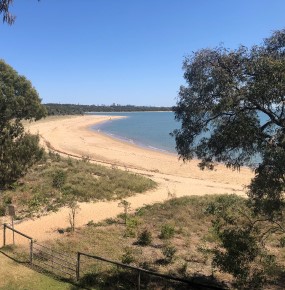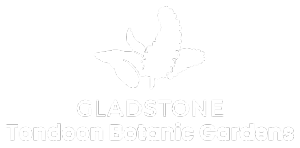Living Here
- Pets and Animals
- Residents
- Report
- Environment
- BackEnvironment
- Air Quality
- Biodiversity
- Biosecurity
- Blue-green algae blooms
- Bushfire Mitigation
- Coasts and Coastal Vegetation
- CoastSnap
- Conservation Programs and Initiatives
- Erosion and Sediment Control
- Feral Animals
- First Nations Fire and Land Officer
- Landfill Gas Abatement
- Mosquitoes
- Pests and Weeds
- Weed Spray Equipment Hire
- Wildlife
- Community Development
- Community Investment
- Services
- Emergencies
Coasts and Coastal Vegetation
Watercraft storage on public foreshores
Our Coast Our Future Strategic Plan (Coastal Hazard Adaptation Strategy)
Seventeen Seventy Coastal Adaptation and Resilience Plan (CARP)
Shoreline Erosion Management Plans
Coastal vegetation and sand dunes
Pandanus dieback
Watercraft storage on public foreshores
Our coastal foreshores, waterways and adjoining parks are important natural assets, holding scenic amenity and recreational value by the community. As the region’s population increases, so does the use of recreational watercraft and our coastal foreshores. Watercraft includes items such as canoes, kayaks, tenders and other small motorised and non-motorised boats.
The inappropriate storage of watercraft on coastal foreshores can cause the following impacts:
- Damage to sensitive coastal vegetation and sand dunes
- Increased coastal erosion through increased foot traffic and reduced vegetation cover
- Damage to infrastructure by watercraft chained to signs, stairs and fences
- Impacts to the scenic amenity of coastal areas
- Safety hazards to users of our parks and foreshores.
You can help avoid these impacts by:
- Taking watercraft back to your home or accommodation
- Anchoring vessels below the high tide line using a sand anchor
- Not storing watercraft on coastal foreshores or parkland
- Not tying watercraft to trees or structures.
The storage of goods on Council-controlled land is prohibited under Local Laws and unattended watercraft may be removed.
Our Coast Our Future Strategic Plan (Coastal Hazard Adaptation Strategy)
Gladstone Regional Council’s Our Coast Our Future Strategic Plan is a long-term Gladstone Region Coastal Hazard Adaptation Strategy (CHAS) to help manage and adapt to the coastal hazard impacts on our communities and ever-changing coastline. Coastal hazards include erosion of our sandy coastlines and short or long-term seawater inundation of low-lying areas along the coastline.
Council was awarded funding through the QCoast2100 program, a Queensland Government and Local Government Association of Queensland’s (LGAQ) initiative. The initiative was designed to assist local governments in planning for the potential impacts of coastal hazards associated with climate change.
Throughout the development of the strategy, detailed coastal hazard modelling studies were undertaken as well as a range of engagement conversations with the community to ensure the values and ideas of residents were incorporated into the strategy.
Our coastal lifestyle in the Gladstone Region is unique and worth preserving for generations to come. This Strategic Plan enables Gladstone Regional Council and stakeholders, including Traditional Owners, industry and residents, to be better prepared to reduce the impacts of coastal hazards on our communities, environment, cultural values, infrastructure, lifestyle and services, both now and into the future (to 2100).
Our Coast Our Future Strategic Plan
Supplement A - Factsheets
Factsheets included in Supplement A:
- Commonly Used Terms
- Our Coastal Landscape
- Coastal Hazards
- Coastal Hazard Adaptation
- Our Values / Our changing coastline / How our coast has changed
- A Strategic Approach to Adaptation
- Our Coast Our Future Strategic Plan
- Resilient Housing
Supplement B - Coastal hazard mapping
Accessing mapping on Council’s online mapping system enables residents/landholders/business owners to consider the information in relation to their property for future planning and land use and to begin necessary preparations for coastal hazards, both now and into the future.
To view the Coastal Inundation and Erosion information in Council's online mapping system, follow the instructions below:
- Visit https://maps.gladstone.qld.gov.au/
- Please read the disclaimer and select ‘I agree - Gladstone Regional Council Services’ to proceed.
- Click the Ok check box and then the Ok button
- Use the search bar on the top left hand corner to find your address
- Open the Layer List and select Coastal Inundation and Erosion
- Expand to view further options and select as necessary
- Zoom out to expand the view to see the layer information.
Seventeen Seventy Coastal Adaptation and Resilience Plan (CARP)
The Seventeen Seventy foreshore faces pressures from coastal hazards such as erosion and inundation – these pressures are expected to increase in the future and place the foreshore area and assets within it at risk.
Council has developed its Coastal Adaptation and Resilience Plan (CARP) which provides a pathway to plan for and adapt to, coastal hazard impacts to foreshore assets in Seventeen Seventy.
Council used an integrated approach that combined the best available coastal science and engineering evidence with in-depth community engagement and social insights.
The community values-led approach helped to develop a vision for the future of Seventeen Seventy and key values shared by the community which has informed the recommended management options for key assets.
Seventeen Seventy Coastal Adaptation and Resilience Plan (CARP)
Shoreline Erosion Management Plans
Coasts and beaches are dynamic systems subject to the constant influence of wind, waves and tides. Erosion, accretion and storm tide events are natural processes that shape the coastline over short and long timeframes.
Council has developed Shoreline Erosion Management Plans (SEMPs) in consultation with our coastal communities to identify values associated with our coastal areas and how to manage threats to natural and man-made assets associated with coastal erosion.
Coastal vegetation and sand dunes
The foredunes, or the area directly behind the beach is a critical part of the dune ecosystem. It is essential to keep the foredunes intact and well covered with vegetation to maintain beach stability and minimise coastal erosion.
All dune plants, whether they are grasses, shrubs or trees growing in groups or by themselves have a role to play in stabilisation. Plants such as grasses and vines or obstructions such as fallen timber, trap windblown sand and help build the foredunes. The aerial parts of trees, such as the coastal she-oak obstruct the wind and absorb salt spray.
To maintain the health of our coastal foredunes it is important that dunes are managed correctly and treated as an important and delicate ecosystem. The foredunes are not recreational areas or extension of residents’ backyards and are instead important natural areas that if managed correctly will help protect the environment.
All plants (living or non-living) that grow on or adjacent to tidal lands are protected and regulated by Council and the Queensland Government and in some instances the Australian Government.
What you can do to protect our coastal foredunes:
- Do not establish turf within the foredunes, turf does not have the ability to trap wind-blown sand and cannot withstand burial or excessive salt spray
- Do not plant exotic garden plants within the foredunes
- Do not light fires on the beach or collect deadwood for use as firewood
- Stick to the official beach access tracks and do not sand board on the dunes, dune vegetation is susceptible to trampling and soil disturbances
- Do not drive on the dunes, dune vegetation cannot tolerate damage by vehicles
- Dispose of garden waste correctly and do not dump green waste in the foredunes
- Do not cut or prune trees growing within the foredunes. If you believe a tree is dangerous contact Council and an arborist will inspect it.
Pandanus dieback
Pandanus (Pandanus tectorius) is an iconic species growing on coastal dunes and headlands from north Queensland to New South Wales. Pandanus trees provide several important ecological services such as stabilising dunes and providing habitat and food for native animals.
Pandanus trees in parts of Queensland and New South Wales have been suffering from dieback since the 1990s, a condition mainly caused by infestations of the Pandanus leafhopper (Jamella australiae).
The leafhopper is endemic to north Queensland where it is controlled by predators not naturally present in our region. The insects feed on the trees’ sap and produce a sticky honeydew which encourages mould and fungal growth. The trees become weakened and susceptible to secondary infections and insects attach, which eventually kills them.
The parasitic wasp (Aphanomerus pusilius) is a natural predator of the leafhopper in its native range and has been introduced to southern Queensland and New South Wales as a biological control agent. Ensuring there are active populations of the wasp is considered the most effective long-term management for Pandanus dieback.
See Also
Living Here
- Pets and Animals
- Residents
- Report
- Environment
- BackEnvironment
- Air Quality
- Biodiversity
- Biosecurity
- Blue-green algae blooms
- Bushfire Mitigation
- Coasts and Coastal Vegetation
- CoastSnap
- Conservation Programs and Initiatives
- Erosion and Sediment Control
- Feral Animals
- First Nations Fire and Land Officer
- Landfill Gas Abatement
- Mosquitoes
- Pests and Weeds
- Weed Spray Equipment Hire
- Wildlife
- Community Development
- Community Investment
- Services
- Emergencies

Have you noticed something new along the Gladstone Region Coastline?
Find out more about CoastSnapGladstone Regional Council
Connect. Innovate. Diversify.
Get in Touch
Phone
(07) 4970 0700
Opening Hours
8.30am - 5pm Monday to Friday
Social media
Postal Address
PO Box 29, Gladstone Qld 4680
Council Offices
101 Goondoon Street, Gladstone Qld 4680
3 Don Cameron Drive, Calliope Qld 4680
41 Blomfield Street, Miriam Vale Qld 4677
Cnr Wyndham & Hayes Avenues, Boyne Island Qld 4680
Rural Transaction Centres
71 Springs Road, Agnes Water Qld 4677
47 Raglan Street, Mount Larcom Qld 4695
Footer Acknowledgement
Gladstone Regional Council would like to acknowledge the Bailai, the Gurang, the Gooreng Gooreng and the Taribelang Bunda people who are the traditional custodians of this land. Gladstone Regional Council would also like to pay respect to Elders both past, present and emerging, and extend that respect to other Aboriginal and Torres Strait Islander people. Learn more about Council's Reconciliation Action Plan (RAP).
Chat Popup
All content © Gladstone Regional Council. All Rights Reserved.
Back to the top







